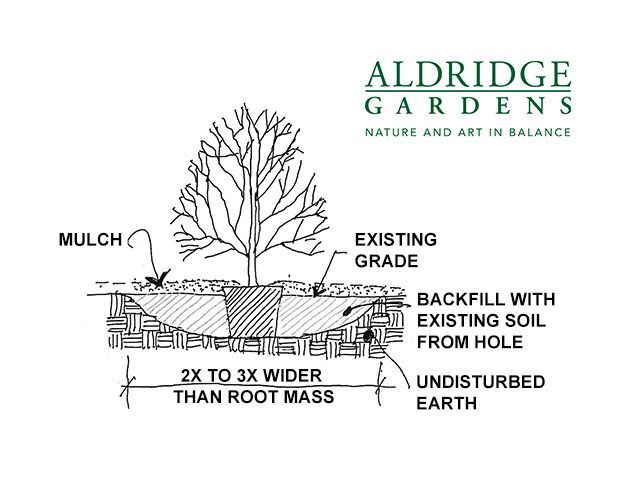How to Plant Flowers, Plants, Shrubs, and Trees

This is the best approach for optimal long-term growth, when planting flowers, plants, shrubs, and trees.
For many years, the most common planting theory was to dig a deep, wide hole in the ground and fill it with lots of top soil and fertilizer -- usually costing more than the plant itself. And this approach will produce growth, but the question is whether you are looking for short-term or long-term results.
Here’s something to consider: nature never digs a hole. Think about it. All of the trees and plants that grow naturally are from a seed that just fell on the ground. Does that mean we shouldn’t dig a hole at all? Should we just set a plant on the ground and wish it well? No, there’s clearly a difference in working with seeds versus existing plants. But you don’t have to dig a deep hole when planting. Ideally, you'll want to dig a hole almost as deep as the soil of the container that your plant comes in. But you’ll want to make that hole wide enough, so that the plant's roots can have somewhere to spread out. See our diagram above to get a better idea of this.
Here's a step-by-step guideline on planting:
(1) DIGGING - Think of the hole as a tapered bowl, almost shaped like a cooking wok. It should be deepest in the middle where the plant sits, and then get more shallow as you move out to the edge. You’ll want it to be two to three times the width of the root mass, so that the roots can spread out. The depth of the hole, should leave about a quarter or a third of the root mass sticking out at the top.
(2) ROOTS - If the plant has been sitting in a container for a while, you’ll want to take a knife and break up the root ball before you place the plant in the hole. Cut into it a little, just to loosen up the roots, before you place it.
(3) BACKFILL - Once the plant is in, backfill the hole with the original soil you dug out.
(4) MULCH - Next, add some mulch around the edges of the root mass top to help retain moisture.
(5) WATER - And, finally, water it in.
Here at Aldridge Gardens, we've used this process with positive results throughout the years. If you load the hole with fertilizer and other organic material, it will provide short-term returns. But for a plant with optimum growth potential, it is important to follow this shallow, tapered-hole planting concept while back-filling with the original soil. It will allow the roots to spread out, take hold, and acclimate to the environment in order to best use the soil's nutrients. This will help the plant to grow-in for the long term. You'll end up with a heartier plant that is better able to persevere against the elements for years of healthier growth.
The best times of the year to plant are just after the last frost in the spring and early fall.











